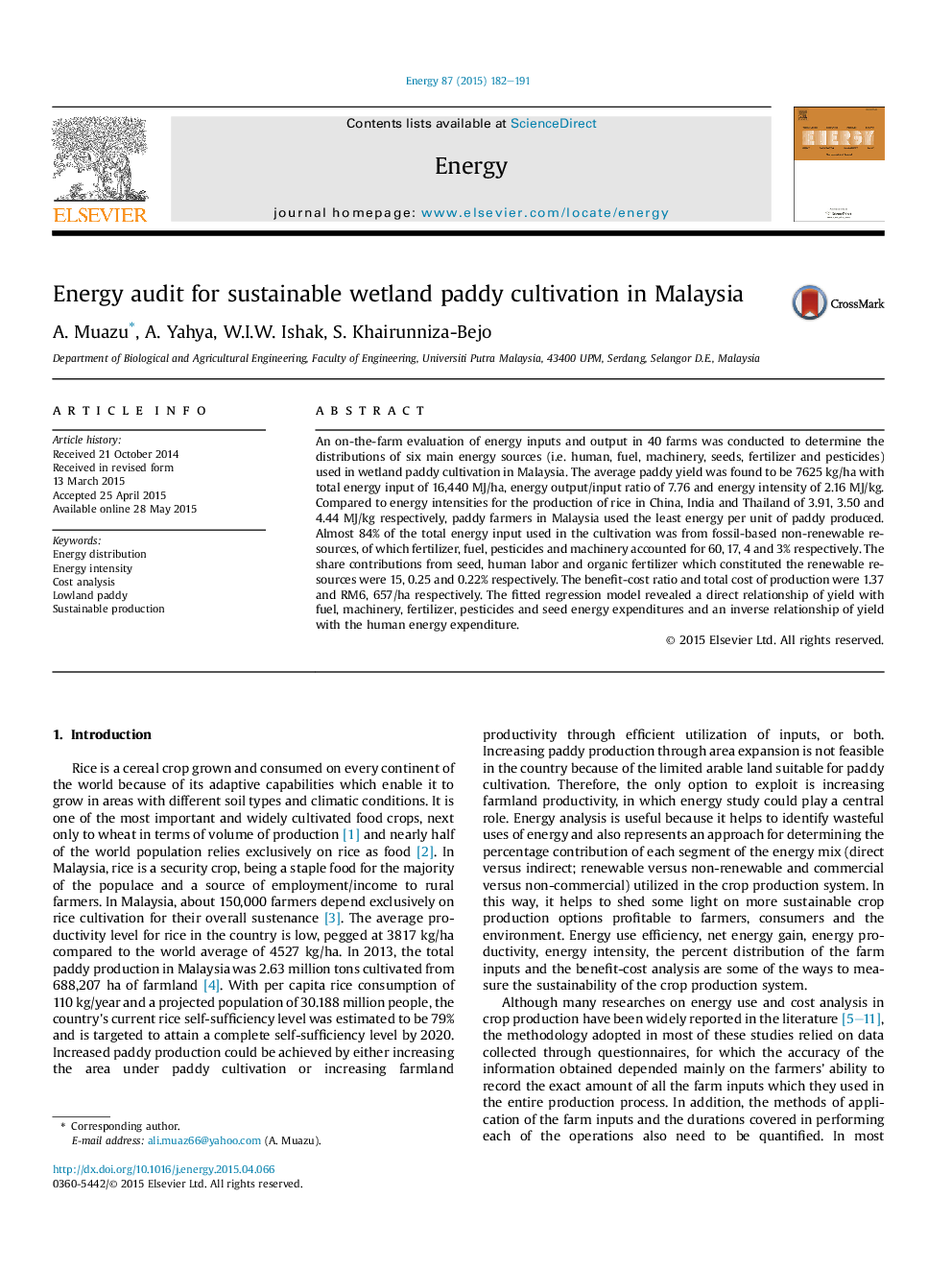| کد مقاله | کد نشریه | سال انتشار | مقاله انگلیسی | نسخه تمام متن |
|---|---|---|---|---|
| 1731827 | 1521459 | 2015 | 10 صفحه PDF | دانلود رایگان |
• We perform energy and cost audit in paddy farms and develop yield predictive model.
• Fossil-based non-renewable resources constitute the highest share of inputs.
• High cost of inputs and absence of scale-economy leads to low benefit-cost ratio.
• Machinery energy has the highest impact on yield.
• The paper may be useful to policy makers and researchers in sustainable energy use.
An on-the-farm evaluation of energy inputs and output in 40 farms was conducted to determine the distributions of six main energy sources (i.e. human, fuel, machinery, seeds, fertilizer and pesticides) used in wetland paddy cultivation in Malaysia. The average paddy yield was found to be 7625 kg/ha with total energy input of 16,440 MJ/ha, energy output/input ratio of 7.76 and energy intensity of 2.16 MJ/kg. Compared to energy intensities for the production of rice in China, India and Thailand of 3.91, 3.50 and 4.44 MJ/kg respectively, paddy farmers in Malaysia used the least energy per unit of paddy produced. Almost 84% of the total energy input used in the cultivation was from fossil-based non-renewable resources, of which fertilizer, fuel, pesticides and machinery accounted for 60, 17, 4 and 3% respectively. The share contributions from seed, human labor and organic fertilizer which constituted the renewable resources were 15, 0.25 and 0.22% respectively. The benefit-cost ratio and total cost of production were 1.37 and RM6, 657/ha respectively. The fitted regression model revealed a direct relationship of yield with fuel, machinery, fertilizer, pesticides and seed energy expenditures and an inverse relationship of yield with the human energy expenditure.
Journal: Energy - Volume 87, 1 July 2015, Pages 182–191
